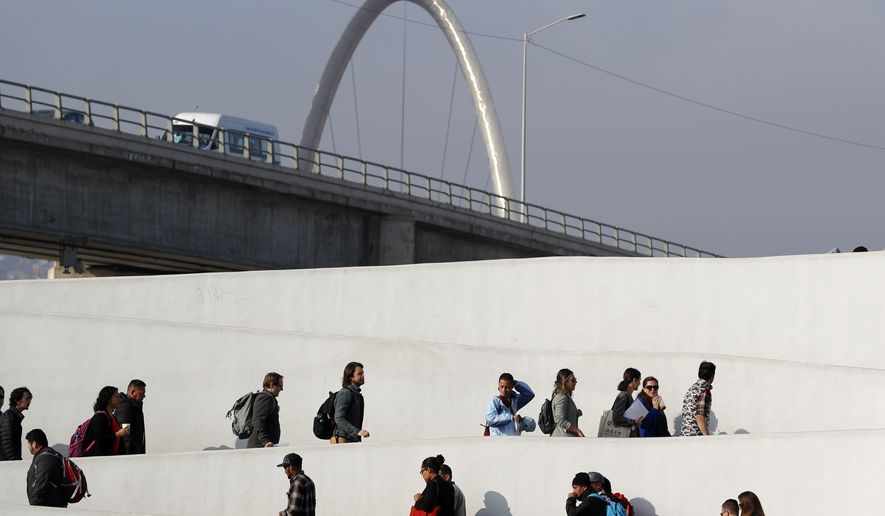A federal judge ordered the Trump administration to stop its new policy of sending asylum-seekers who jumped the border back to Mexico to wait while their cases proceed, ruling Monday that the plan was likely illegal.
Known informally as the “wait-in-Mexico policy,” and officially as the Migrant Protection Protocols, the plan was a major part of the administration’s moves to try to stem the flow of immigrants crossing into the U.S. illegally.
Judge Richard Seeborg, an Obama appointee to the bench, said not only does the policy violate immigration law, but Mexico is so dangerous that making asylum-seekers wait there — even if they’re not from Mexico — is untenable.
Judge Seeborg said it may be possible to come up with a policy that would be legal, with sufficient safeguards, but the Trump administration’s version doesn’t cut it.
He gave the government until Friday to appeal, and then his ruling will take effect. Any appeal would go to the 9th Circuit Court of Appeals, which is the court President Trump regularly bashes, arguing it is biased against him.
The American Civil Liberties Union, which argued the case before Judge Seeborg, said the decision was a major setback for the president’s get-tough approach.
“Try as it may, the Trump administration cannot simply ignore our laws in order to accomplish its goal of preventing people from seeking asylum in the United States,” said Judy Rabinovitz, deputy director of the ACLU’s Immigrants’ Rights Project.
Federal law allows the government to make immigrants who illegally jumped the border go back and wait on the other side of the border — either Mexico or Canada. But no previous administration had tested that policy.
Mr. Trump, though, included it as part of his original series of immigration executive orders in January 2017. It took two years for his administration to pull the trigger, implementing it this year as the border surge of immigrants crossing illegally grew.
Migrants from Central America have figured out how to use asylum claims to gain a foothold in the U.S., where they are quickly released and disappear into the shadows. In moving ahead with the wait-in-Mexico policy, the administration hoped to deny them the chance to disappear into the U.S., figuring that would discourage some from coming.
The program has started slowly. The Department of Homeland Security has been reluctant to talk numbers, but was slowly expanding the program and working with Mexico to make sure the country could handle the people the U.S. would be sending back.
But last week, Homeland Security Secretary Kirstjen Nielsen said she was expanding use of the program.
She was ousted from her position Sunday.
• Stephen Dinan can be reached at sdinan@washingtontimes.com.




Please read our comment policy before commenting.